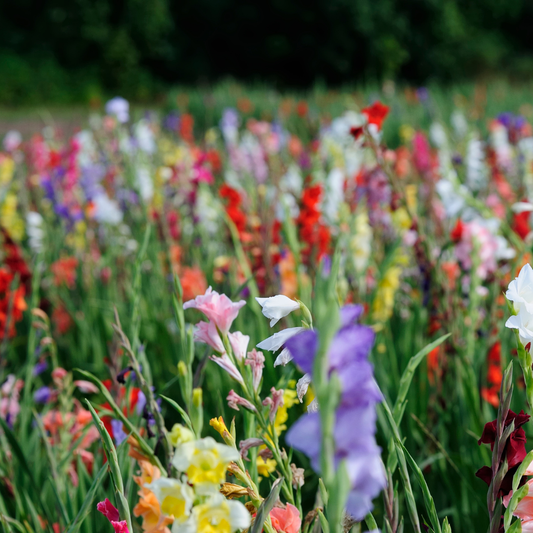
When to Plant Lavender? The Complete Guide
Share
Lavender is a popular and versatile plant that not only adds a wonderful scent to your garden but also attracts bees and butterflies. This guide will show you when and how best to plant, care for, and propagate lavender for a healthy and fragrant plant.
Interested in more plant guides? See also:
- When to plant which plants? Overview
- When to Plant Tulips? The Complete Guide
- When to Plant Strawberries? The Complete Guide
- When to Plant Flower Bulbs? The Complete Guide
When to plant lavender?
Lavender is ideally planted between March and May . This is the period when the risk of frost has passed and the plant has enough time to establish itself well before winter. Lavender loves warmth and sun, so a spot in full sun is perfect.
How much space between plantings and why?
When planting lavender, it is important to leave enough space so that the plants remain airy and dry well after rain:
- Distance between plants: Keep a distance of 30-40 cm .
- Distance between rows: Keep 50-60 cm between the rows.
Lavender needs space to develop and form a dense bush. Planting too close together increases the risk of mold and disease.
How to plant lavender?
Follow these steps for successful lavender planting:
- Choose the right location: Lavender prefers a sunny, dry spot. The more sun, the stronger the fragrance and the better the blooms.
- Soil preparation: Lavender prefers chalky, well-drained soil. If necessary, mix some sand or gravel into the soil to improve drainage.
- Planting depth: Position the plant so that the root ball is just below the soil surface. Ensure that the center of the plant is not covered by soil.
- Watering: Provide plenty of water immediately after planting, but avoid wet feet. Lavender tolerates drought better than overly wet soil.
How do I recognize a lavender plant?
Lavender has silvery-gray leaves and narrow, aromatic stems. The flowers are usually purple, but can also be pink, white, or blue. The flowers grow in dense clusters and bloom during the summer months.
How do I plant lavender in the ground?
Lavender thrives in open ground if you consider the following:
- Location: Choose a sunny and dry spot.
- Soil: Work gravel or sand into the soil to improve drainage.
- Protection: In cold winters you can protect lavender by applying a layer of mulch or straw around the base of the plant.
How to propagate lavender?
Cuttings are the ideal way to grow new lavender plants. Here's how:
- Cutting time: It is best to take cuttings in August .
- Cuttings: Cut healthy, non-flowering shoots of about 10 cm long.
- Preparation: Remove the lower leaves and dip the bare part in rooting powder.
- Planting: Stick the cuttings in potting soil or sandy soil and keep the soil slightly moist.
- Overwintering: Place the cuttings in a sheltered spot and give them time to form roots.
When to prune lavender?
Ideally, prune lavender in spring (March-April) and after flowering (August-September) . Pruning keeps the plant compact and encourages full blooms.
- Spring pruning: Cut the plant back to just above the woody part. This stimulates new growth.
- Late summer pruning: Remove spent flowers and give the plant a light pruning to maintain its shape.
- Avoid drastic pruning back to the old wood as this can damage the plant.
Tips for healthy and fragrant lavender
Want to grow your lavender optimally? Follow these tips:
- Prune on time: Prune lavender annually to prevent woodiness.
- Fertilize sparingly: Lavender requires few nutrients. Too much fertilizer will weaken the scent and reduce the number of flowers.
- Protect against wet winters: Lavender needs well-draining soil. If necessary, place plants on a raised bed.
Table: When to plant lavender?
| Plant | Best planting month | Annual? | Distance between plants | Can it hibernate? | Cutting time |
|---|---|---|---|---|---|
| Lavender | March - May | Perennial | 30-40 cm | Yes | August |
This guide will teach you exactly when and how to plant, cut, and prune lavender for a fragrant and flowering garden. Want to learn more about other plants? Be sure to check out our other guides via the links above. Happy gardening!



